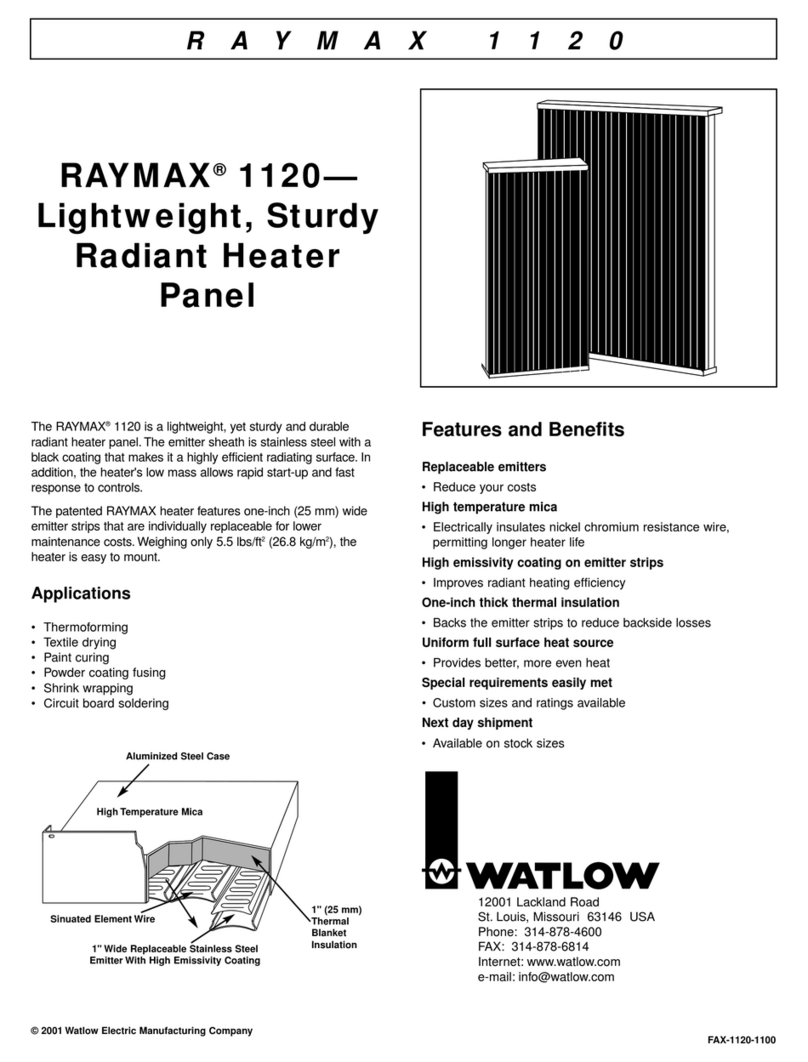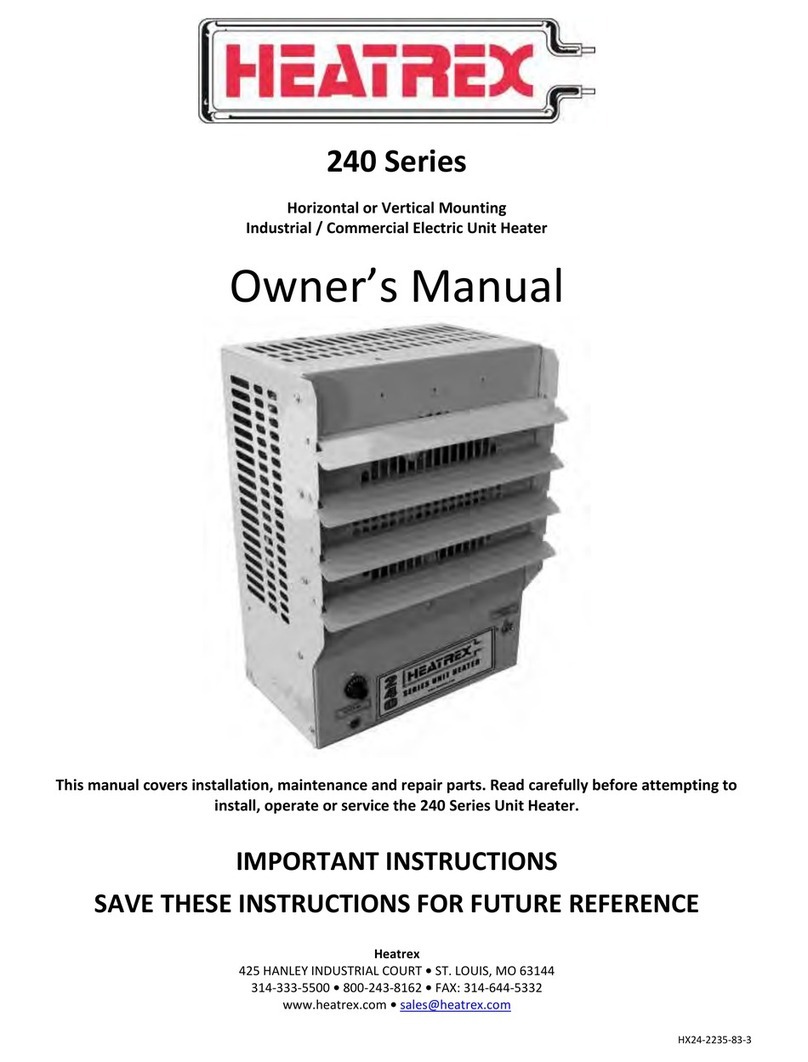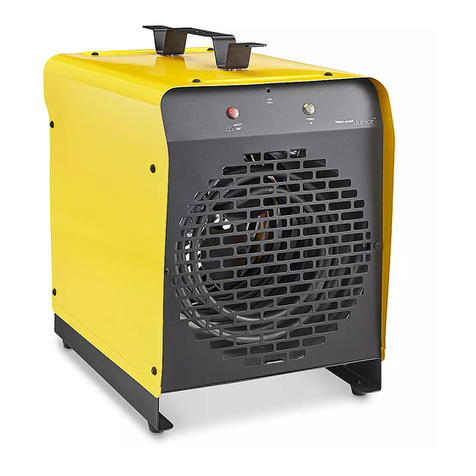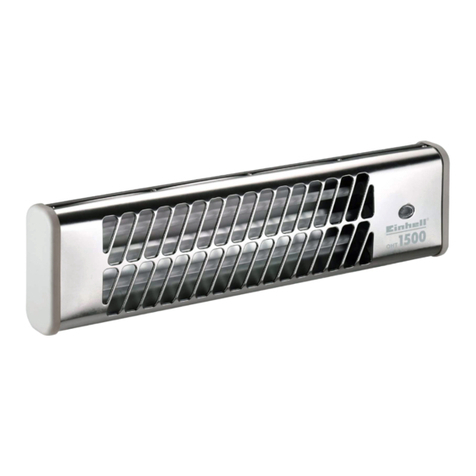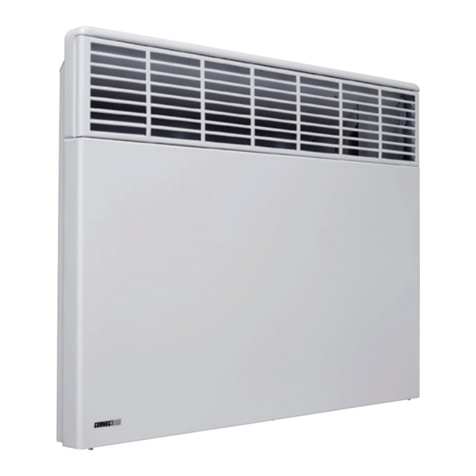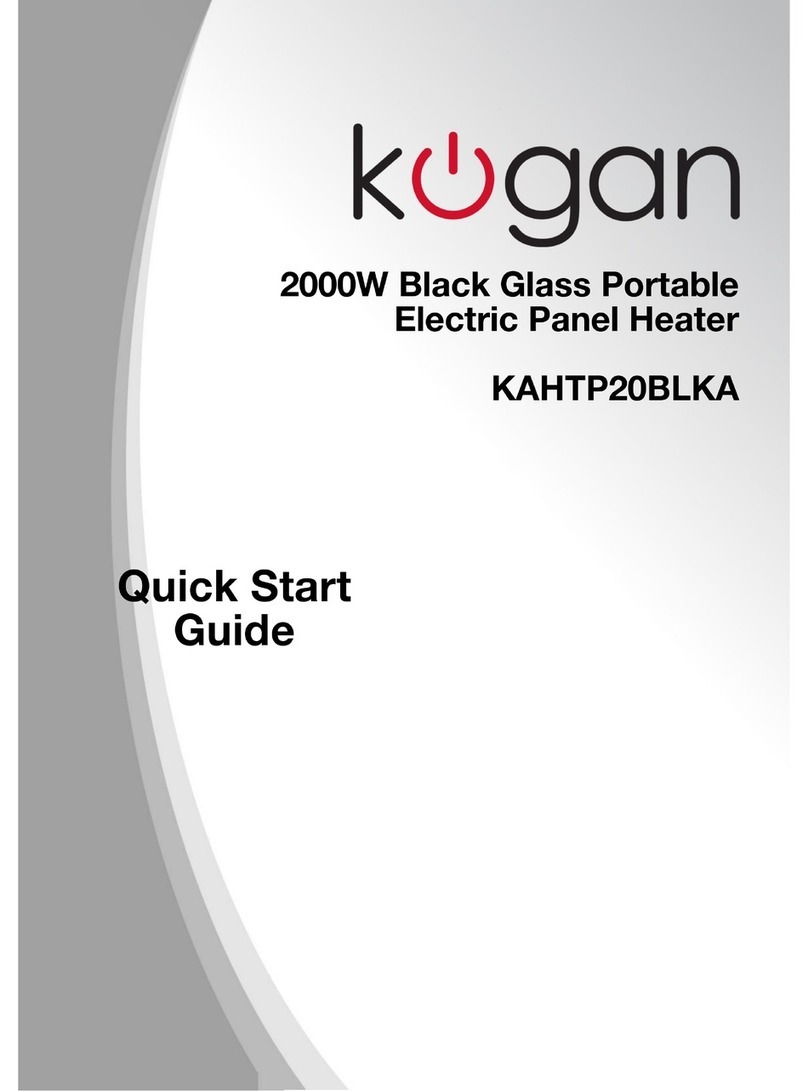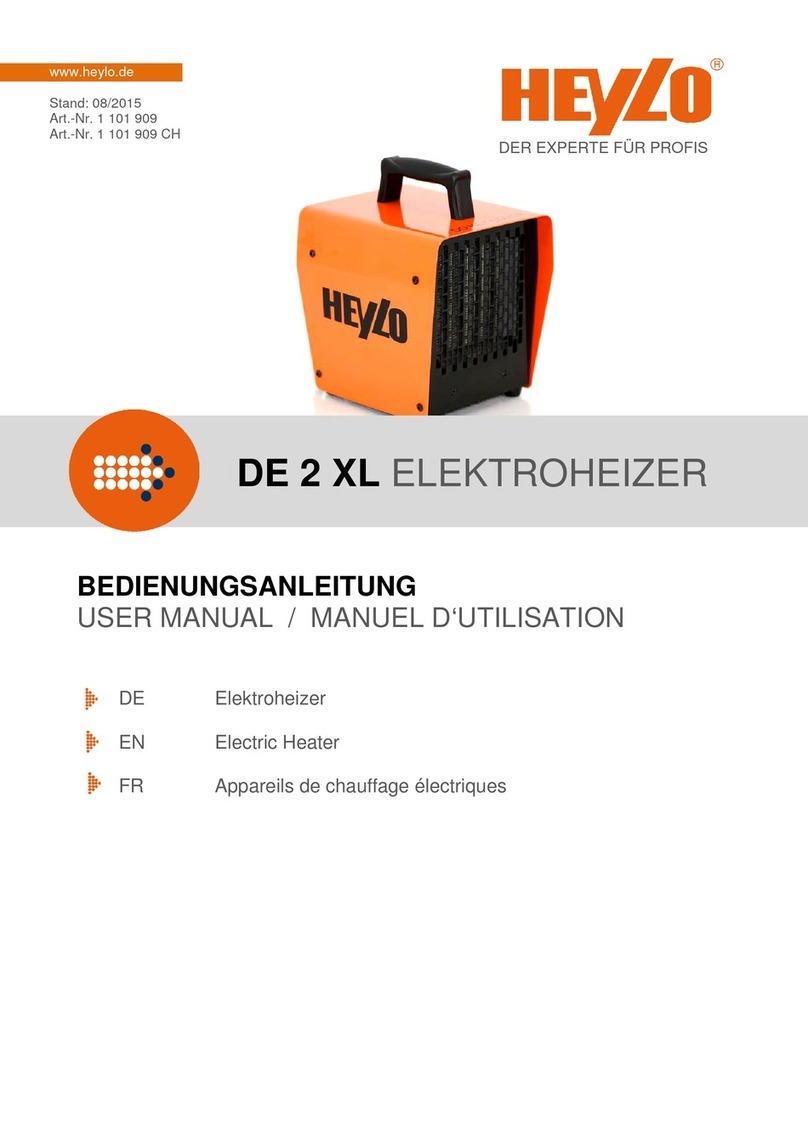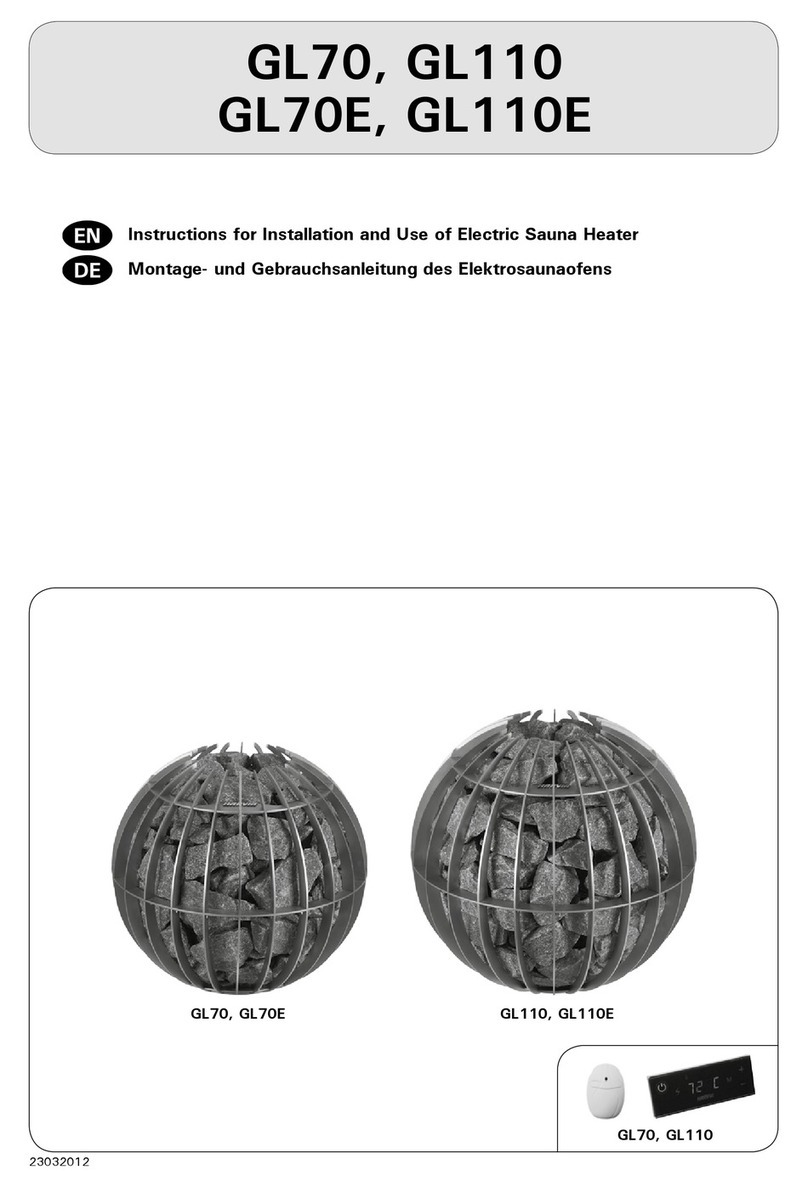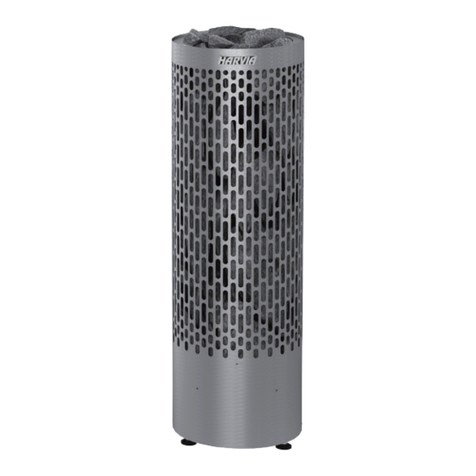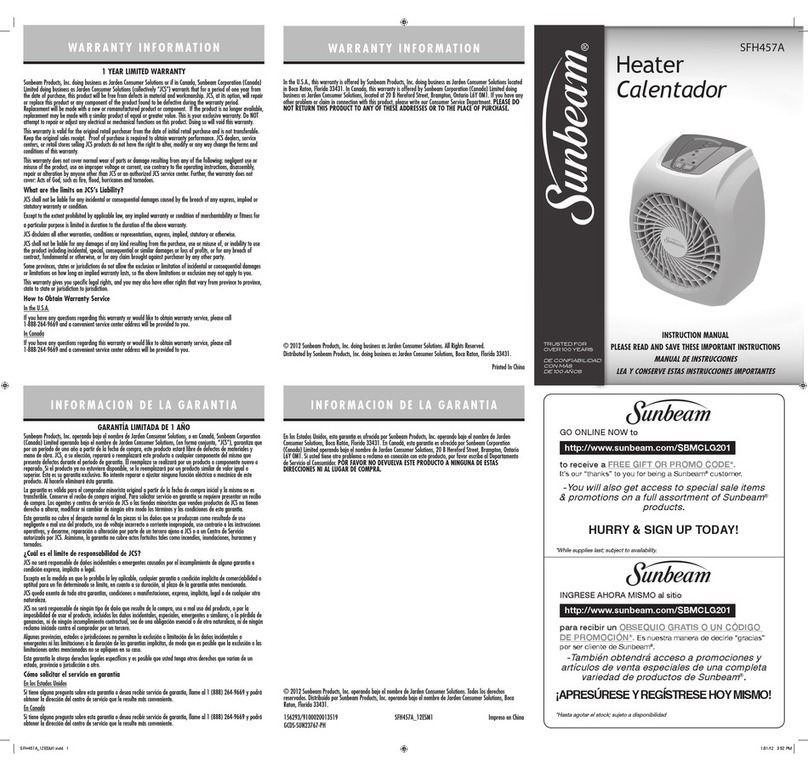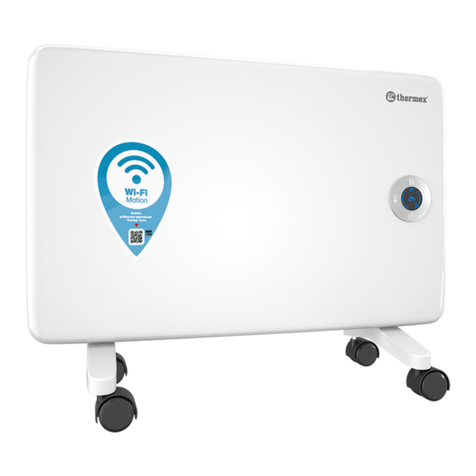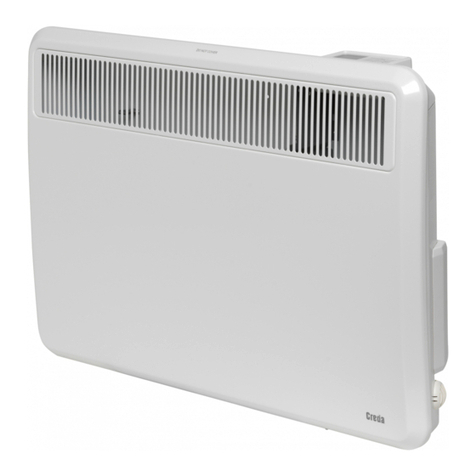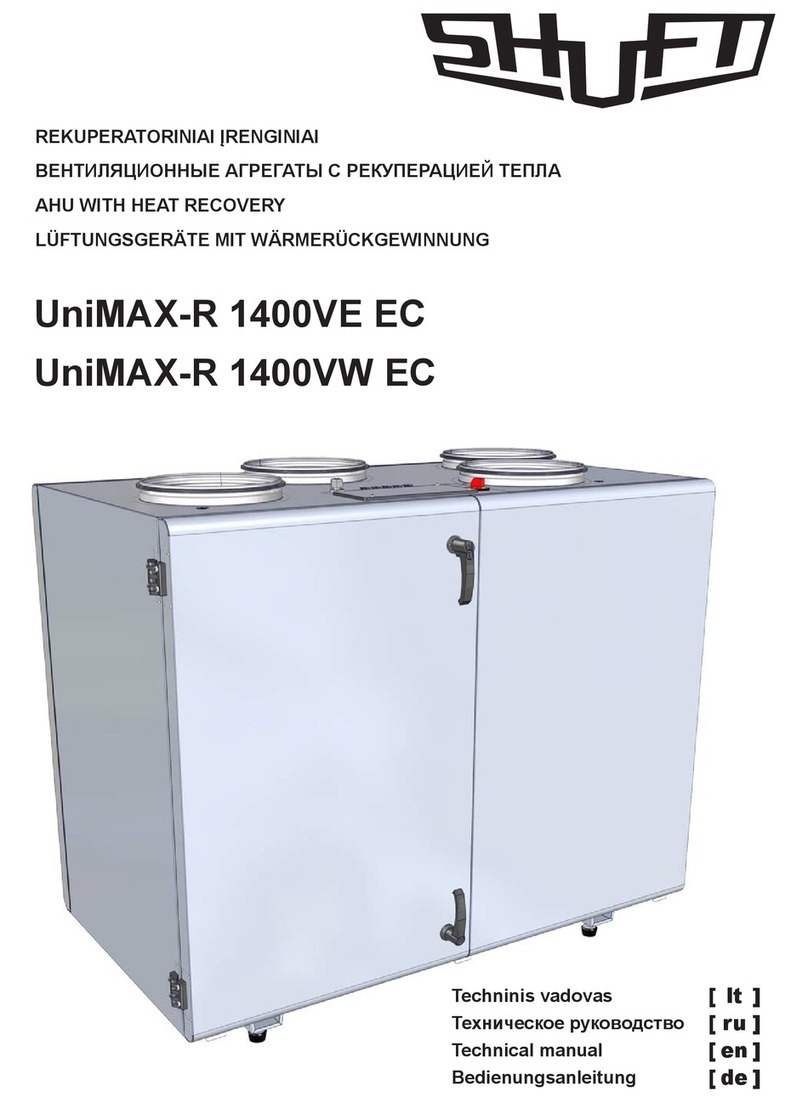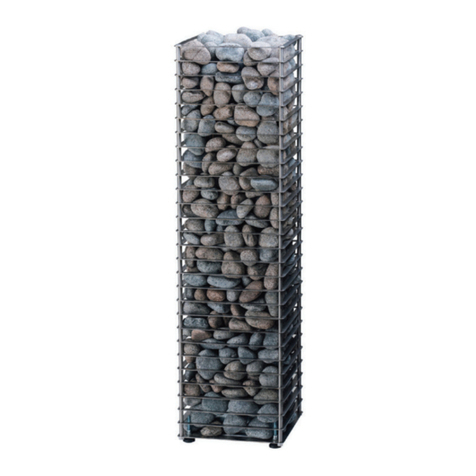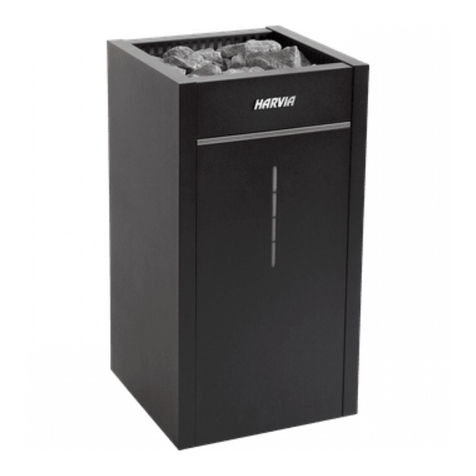Watlow Electric 316-42-15-1 Instruction Manual

WATLOW IND.WATROD Modular Duct Heater Installation & Maintenance Manual
I&M NUMBER: 316-42-15-1 Page: 1
Date:6/11/2008 Rev: 2
_________________________________________________________________________________________________________________________________________________________________________________________________________________________
______
WATLOW IND.n # 6 INDUSTRIAL LOOP RD. n HANNIBAL MO, 63401n PHONE 314-221-2816 n FAX 314-221-3723
Pre Installation
•Check to make sure that heater received is the same as that ordered.
•Elements may come in contact with each other during shipment. Minor adjustments to elements may be
required prior to installation to separate them. Extensive bending of elements should be avoided since
dielectric strength between coil and sheath may be compromised.
•Watlow heaters are built to comply with UL and CSA dielectric requirements, it may be necessary due to
atmospheric conditions / humidity, to perform a dielectric test prior to startup. (Refer to megohm test
under Installation section)
Safety
Electric heaters are inherently dangerous!! Care should be taken to read and completely understand the
Installation and Maintenance manual before installing and wiring the heater. Any installation and
maintenance performed on the heater shall be done by a qualified electrician, in accordance with the
"National Electric Code" and other electrical codes as they apply. It is the users responsibility to ensure that
the heater being used is properly selected and installed in the application.
The Caution Symbol (exclamation point) alerts you to a "CAUTION", a safety or functional hazard which
could affect your equipment or its performance.
The warning symbol (lightning bolt) alerts you to a "WARNING", a safety hazard which could affect you and
the equipment
Installation
Proper heater selection and installation will result in efficient heat transfer, safe operation, and long heater
life.
1. Megohm precheck
During shipping and/or storage, the possibility of moisture absorption by the insulation material within the
element is possible. To ensure proper megohm values a minimum 500 VDC megohm meter (Megger)
should be used to ensure that the megohm reading between the heater terminal and the heater sheath is
more than 10 megohms when the unit is at room temperature.
If several units are interconnected, the megohm of the heater is obtained by taking the reading and
dividing by the number of interconnected elements. This reading should be greater than 10 megohms.
If a low megohm value exists, two alternative methods can be used to remedy the situation. The best
method is to remove all terminal hardware, and bake out the heater at no higher than 250°F (120°C)
overnight or until an acceptable reading is reached. The second method is to energize the unit at low
voltage in air until the megohm is at an acceptable reading. Care should be taken to prevent the heater
sheath from exceeding 750°F (398°C) for Incoloy®.
2. Protection of heater elements from over temperature
The use of temperature controls to regulate heating process and prevent heater over temperature is
highly recommended to ensure safe heater operation. It is the users responsibility to ensure safety of
the installation. Individual heater modules are designed to accommodate optional high limit
thermocouple kit.
WARNING: Install high temperature control protection in systems where an over temperature
fault condition could present a fire hazard or other hazard. Failure to install temperature control
protection where a potential hazard exists could result in damage to equipment and property,
and injury to personnel.

WATLOW IND.WATROD Modular Duct Heater Installation & Maintenance Manual
I&M NUMBER: 316-42-15-1 Page: 2
Date:6/11/2008 Rev: 2
_________________________________________________________________________________________________________________________________________________________________________________________________________________________
______
WATLOW IND.n # 6 INDUSTRIAL LOOP RD. n HANNIBAL MO, 63401n PHONE 314-221-2816 n FAX 314-221-3723
Failure of components in a temperature control loop, such as the sensor, heater control relay or main
temperature control, can result in damage to a product in process, a melt down of a heater, and / or
damaging fire.
To protect against this possibility, over temperature protection must be provided to interrupt or remove
power from the heater circuit. A bulb and capillary thermostat is not recommended for this function
since it may not respond quickly enough to adequately protect the heater. In cases where the
thermostat bulb gets too hot before the system is turned off, the thermostat bulb could rupture.
This could result in the thermostat remaining in the "ON" condition since there is insufficient
fluid to move contacts apart. We recommend the temperature protection have appropriate third party
approval, and be applied in the classification for which it was tested and approved.
3. Terminal Enclosures
Terminal enclosures should be selected to be compatible with the environment in which the heater will
be located. It is the users responsibility to determine the need for correct rating of the electrical housing.
This should be based on appropriate national and local electrical codes. Failure to use a compatible
enclosure could result in heater damage and personnel danger.
Standard terminal enclosures are designed for general purpose use and are rated NEMA 1. These
enclosures should be applied where there will be no danger of spilled liquids, dampness, dirt, and
gaseous conditions. Enclosures for wet or hazardous locations are also available, but must be installed
at the factory.
Although enclosures are supplied over the terminals, units should be located in an area that will minimize
the chance of being hit by falling or moving objects. The terminals must be protected at all times from
moisture or vapor.
In hazardous locations, (as defined in NFPA 70 NEC, Article 501) explosion resistant housings must be
used.
In order to maintain termination integrity, the terminal enclosure should be kept below 400°F
(204°C).
4. Orientation / Mounting
The duct heater may be mounted vertically, or horizontally, from the left to right, top or bottom. The inlet
side of the unit must be at least 48" downstream from any transition in duct size or direction, or from any
air handling equipment. See Figure 1 for locations that should be avoided.
Heaters may be ganged in parallel for nearly any total wattage desired. The temperature control
thermocouple if so equipped should be located near the work to sense exiting air temperature. Conduct
process temperature sensing in the outlet stream away from the heater.
Minimum air velocity through the heater is 200 fpm for air temperatures approaching 800°F (412°C).
Lower velocities will jeopardize element life.
Air flow over the entire face of the heater should be uniform at the design velocity.
The units screw or bolt in place through the 3/8" dia. holes in the mounting flange. When installed
vertically through the top of the duct, they are self supporting when the duct is capable of supporting the
heater weight.

WATLOW IND.WATROD Modular Duct Heater Installation & Maintenance Manual
I&M NUMBER: 316-42-15-1 Page: 3
Date:6/11/2008 Rev: 2
_________________________________________________________________________________________________________________________________________________________________________________________________________________________
______
WATLOW IND.n # 6 INDUSTRIAL LOOP RD. n HANNIBAL MO, 63401n PHONE 314-221-2816 n FAX 314-221-3723
OVERHEATING
OVERHEATING
OVERHEATING
OVERHEATING
OVERHEATING OVERHEATING
Heater too close to elbow Heater too close to transition
Heater too close to blower Heater blocked by filter and filter support
Figure # 1

WATLOW IND.WATROD Modular Duct Heater Installation & Maintenance Manual
I&M NUMBER: 316-42-15-1 Page: 4
Date:6/11/2008 Rev: 2
_________________________________________________________________________________________________________________________________________________________________________________________________________________________
______
WATLOW IND.n # 6 INDUSTRIAL LOOP RD. n HANNIBAL MO, 63401n PHONE 314-221-2816 n FAX 314-221-3723
When installed horizontally the user must determine whether the duct wall has sufficient strength to
support the unit by the flange only. A frame may be necessary to support the unit in the duct. This frame
can have tapped holes or captive nuts to receive mounting bolts. An access panel in the duct can
facilitate installation.
DANGER: HAZARD OF FIRE. Electric heaters are capable of developing high temperatures so extreme
care should be taken to locate heaters in safe environments. Mounting heaters in atmospheres
containing combustible gases and vapors should be avoided. According to article 501 of the NEC, the
maximum surface temperature of the heater shall not exceed 80 % of the auto-ignition of the surrounding
atmosphere when the heater is continuously energized. Care should also be taken to keep combustible
materials far enough away to be free of the effects of high temperatures.
5. Wiring
WARNING; HAZARD OF ELECTRIC SHOCK. Any installation involving electric heaters must be
grounded to earth to eliminate shock hazard.
Electrical wiring to the heaters must be installed in accordance with the National Electric Code and any
state and local electrical code by qualified personnel.
Consult wiring diagram supplied with the unit for correct feeder wires connections. If one is not supplied,
the factory should be consulted for the appropriate wiring diagram. Feeder wire should be properly
selected based on amperage, electrical power rating, ambient temperature, and type of environment.
Feeder wire should also be housed in either rigid or flexible conduit which carries the same classification
as the heater enclosure. It is the users responsibility to properly size and install feeder wire.
Feeder wire line connections may be made directly to stud terminals or box type compression fittings.
Box type compression fittings will accept a #4 AWG maximum wire while stud terminals will accept a
#10 ring connector(T&B, Amp, etc.). It is essential that these connections be tight. Stud terminals should
be tightened to a maximum torque of 20 in-lbs while the bottom nut is supported. Ground connection
(color coded "green") is supplied inside the housing for ground wire.
Line voltage must be equal to or less than rating stamped on the heater assembly.
The power circuit is required to include a branch circuit overcurrent protective device, a disconnect and a
secondary thermal cut-out with manual reset. The control circuit should include the temperature
controller, the primary thermal cut-out and an interlock with the fan motor. One method to do this is with
a pressure air flow switch. It will open the control circuit and de-energize the heater when any
circumstance prevents sufficient air flow through the heater.
The air handler should be set up to run on a time delay after the heater is de energized. The correct time
delay will depend on the blower rating, amount of duct insulation, and the total power output of
heaters(s). The time delay allows the elements to cool and prevents overheating the adjacent duct and
terminal areas.
Start Up
Before energizing the heater the following items should have been checked with the heater power
disconnected:
1. Electrical termination is tight and wiring is per wiring diagram supplied with heater
2. Proper disconnecting means and fusing have been installed
3. The voltage rating of the heater is the same as that being applied
4. Megohm is within acceptable limits
5. Proper temperature controls and safety limiting devices are in place
6. Heater is securely installed in duct

WATLOW IND.WATROD Modular Duct Heater Installation & Maintenance Manual
I&M NUMBER: 316-42-15-1 Page: 5
Date:6/11/2008 Rev: 2
_________________________________________________________________________________________________________________________________________________________________________________________________________________________
______
WATLOW IND.n # 6 INDUSTRIAL LOOP RD. n HANNIBAL MO, 63401n PHONE 314-221-2816 n FAX 314-221-3723
After applying power to the heater make sure that the system is being controlled properly before leaving
it to run unattended. Failure to do this could result in overheating resulting in personnel danger and fire.
Troubleshooting
PROBLEM Cause / Correction
No power available to heater Check disconnect switch to ensure it is in the "ON" position
and that fuses are not blown. Replace fuses if they are blown
Fuses blowing Check heater electrical rating. Applied voltage may be wrong
Check fuse rating. Fuses should be at least 25% more than full
load amperage.
Disconnect heater power source. Check the heater resistance
to ground. This should be no less than 1 Megohm. Refer to
Megohm checking.
Not enough power Check line voltage to ensure it is within specification
Check full line current if voltage is correct. If line current is lower,
the heater may be wired wrong or has open elements
Air not heating to desired Not enough Kw or incorrect voltage being applied
temperature Too much heat loss, higher wattage heater may be required
High limit tripping / alarm Not enough fluid flow
Too much Kw
Line voltage higher than designed / allowable
Preventative Maintenance
CAUTION: HAZARD OF ELECTRIC SHOCK. TURN ALL POWER TO HEATER OFF, USE
APPROPRIATE DISCONNECT LOCKOUTS AND ALLOW SYSTEM/HEATER TO COOL BEFORE
PERFORMING ANY MAINTENANCE
Check line connections to make sure they are tight, free of oxide build-up, and that no dust or dirt build-up is
present. Re tighten to 20 in-lbs as necessary.
Check enclosure (inside) for rust, dirt or dust. Remove rust if present, with steel wool (or equal) and
thoroughly blow clean with dry, oil-free air.
If enclosure is moisture resistant, check condition of cover gasket. A replacement can be obtained from the
factory.
Replacement Parts
Reference the duct heater part number on the nameplate when ordering replacement parts.
Recommended spare parts would be : a Modular Duct Heater, replacement module, and high limit
thermocouple or high limit thermocouple kit.
To replace individual heater module:
a) Disconnect power and then feeder wire
b) Remove terminal hardware connecting module to be replaced and other adjacent modules.
c) Remove the two Allen head screws and split washers holding module to main flange.
d) Pull module through main flange as shown below.
Table of contents
Other Watlow Electric Electric Heater manuals
